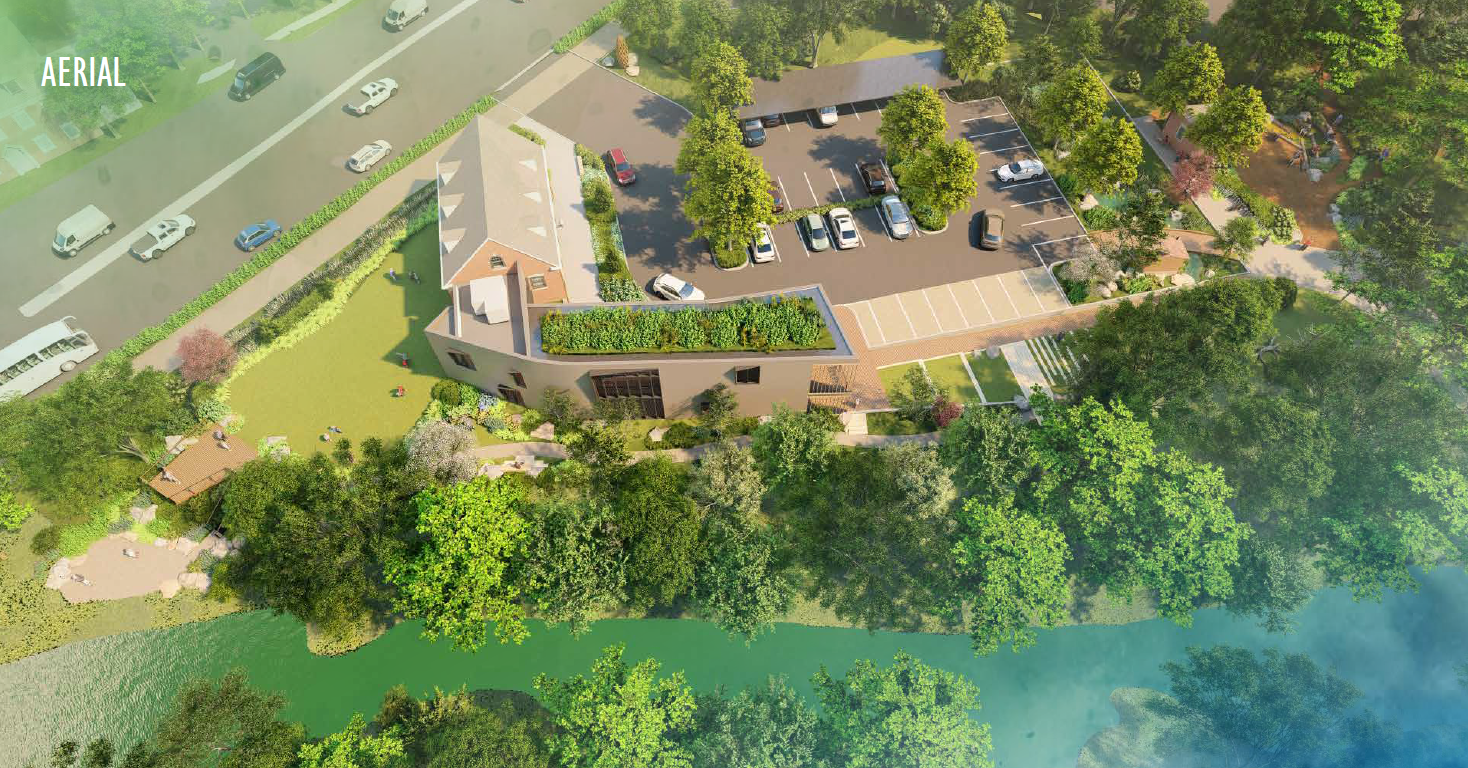Inspired by Silent Spring and Rachel Carson’s belief in the interconnectedness of life, the landscape design for the Springsong Museum transforms a former water filtration plant in Silver Spring, MD, into a multisensory journey rooted in the principles of “One Water” and “One Land.”
Sight comes alive through a vibrant, ever-changing palette of native plantings—from spring wildflowers to fiery autumn leaves—alongside sculptural boulders and reclaimed art that reflect local wildlife and environmental themes.
Sound shapes the atmosphere. The rustling of leaves, birdsong, and the soft trickle of rainwater flowing through chains and runnels buffer Route 29 and offer a soothing, natural soundtrack.
Smell connects visitors to the land through the earthy fragrance of soil, blooming milkweed, rosemallow, and mountain mint—evoking Carson’s reverence for the richness of nature.
Touch is woven throughout: the rough bark of native trees, soft textures of foliage, stone dust underfoot, and the warmth of wood along the runnel all invite tactile exploration and pause.
Taste makes a subtle appearance in edible landscapes—raised garden beds, berry bushes, and herbs—highlighting our shared reliance on nature’s bounty and the importance of sustainability.
Springsong’s landscape is more than a backdrop—it’s an immersive call to wonder, reflection, and renewal. It honors Carson’s legacy and invites every visitor to experience, protect, and cherish the natural world.
Springsong Museum
RACHEL CARSON | The landscape design draws inspiration from Rachel Carson’s seminal work, Silent Spring, and her deep connection to nature. Through the lens of Carson’s philosophy, the landscape invites sensory exploration and reflection on the principles of “One Water” and “One Land,” which echo her belief in the interconnectedness of all life.
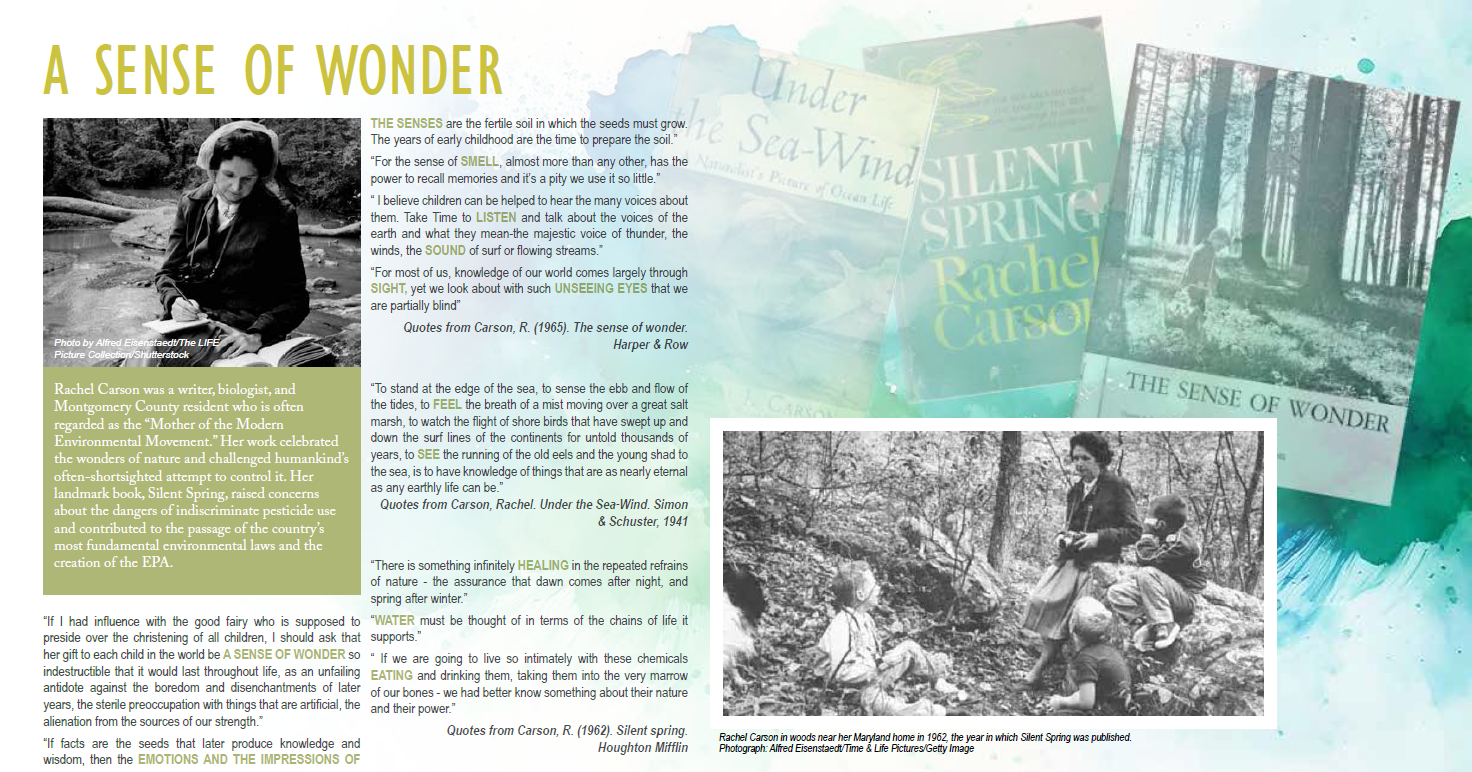
SITE HISTORY | Situated on the site of a former water filtration plant near Carson’s residence in Silver Spring, this design seeks to evoke a profound sense of wonder, immersing visitors in the beauty and complexity of the natural world while respecting the historical character of the site and the architecture.
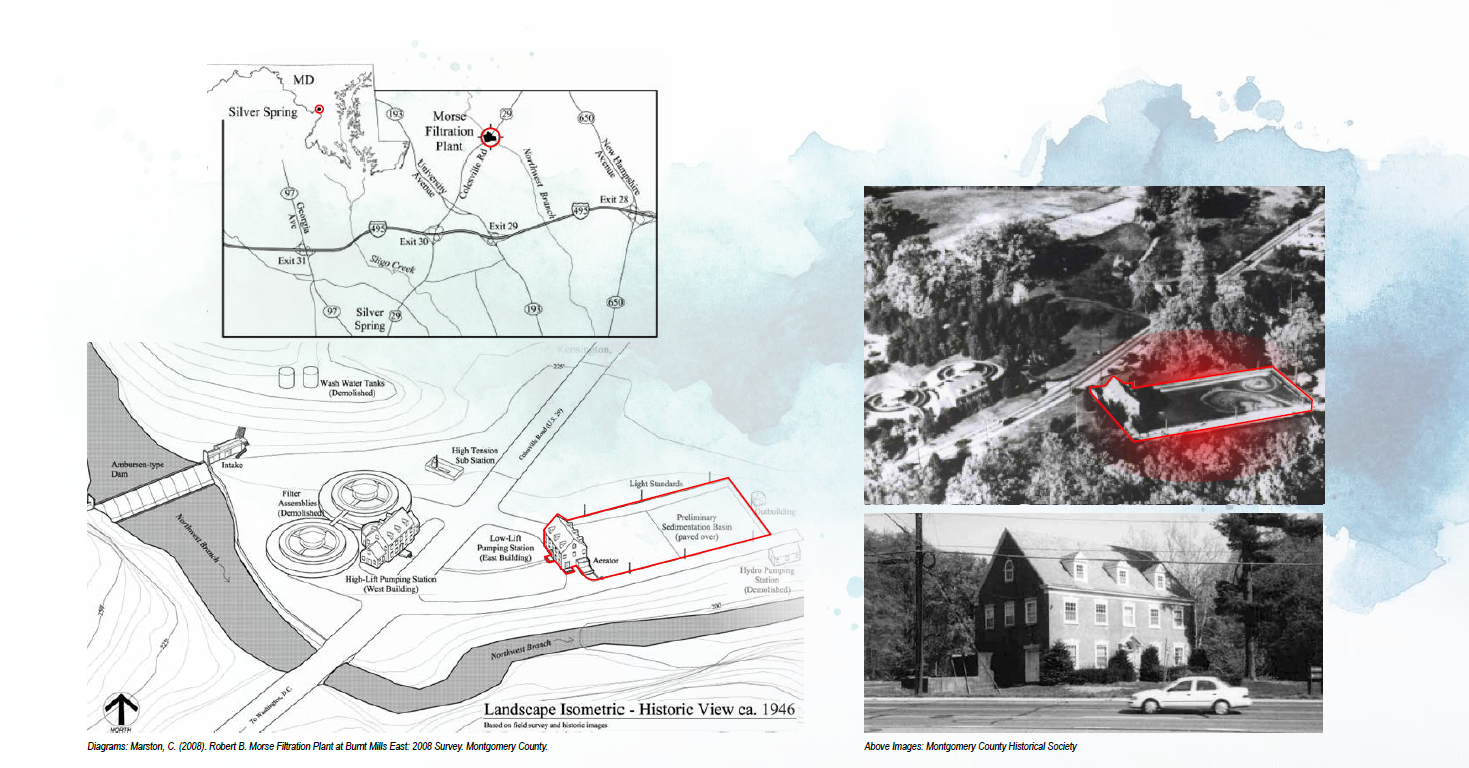
SPACE CHARACTER | The landscape design addresses site challenges—proximity to a highway, existing trees, utility easements, noise, floodplain, and historical sensitivity—through thoughtful methods that harmonize people with nature, inspiring curiosity, reflection, and lasting appreciation for the natural world.
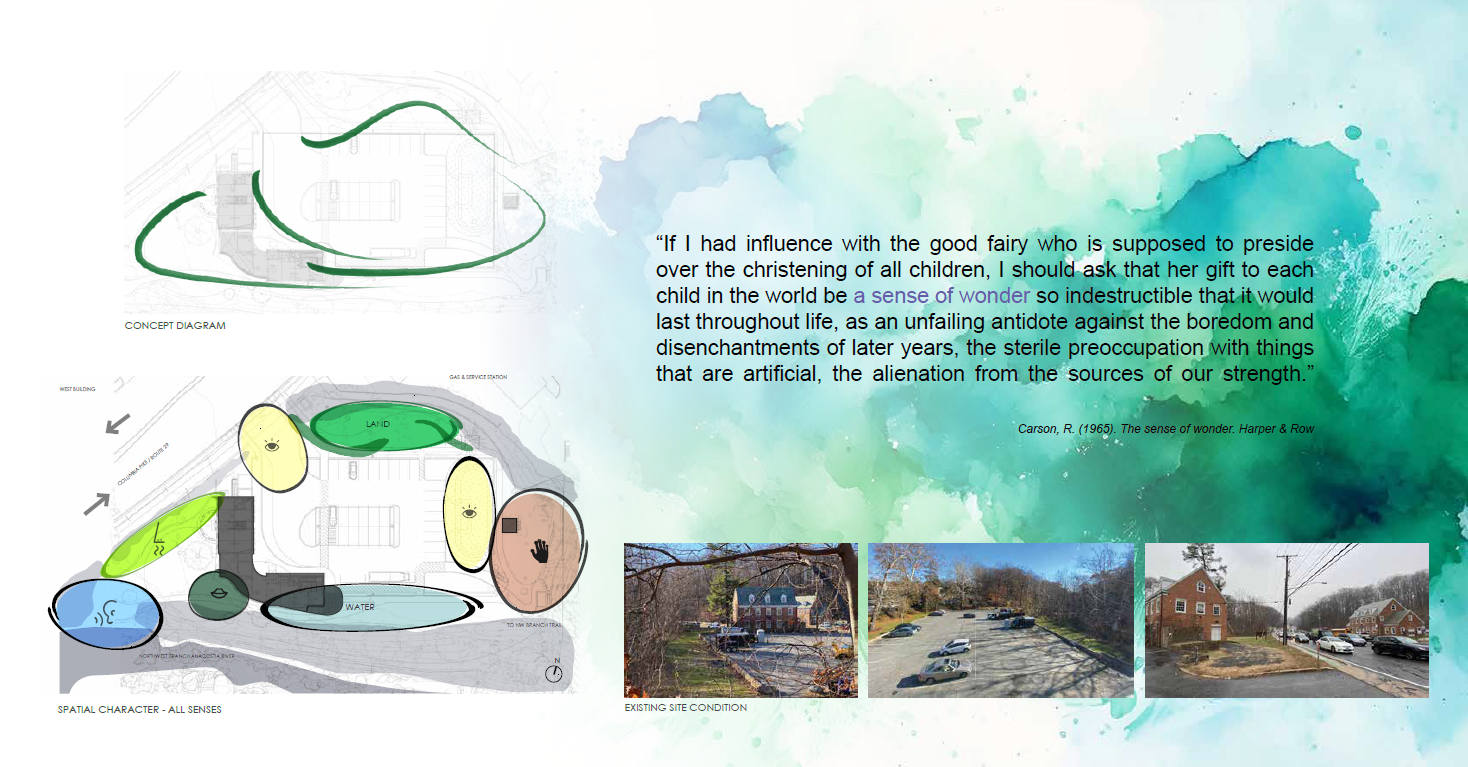
VISION PLAN | The landscape design for the Springsong Museum cultivates a sense of wonder, drawing visitors into a multisensory journey that deepens their appreciation of the natural world. Grounded in the principles of One Water, One Land, the design emphasizes the inseparable relationship between water, land, and life.
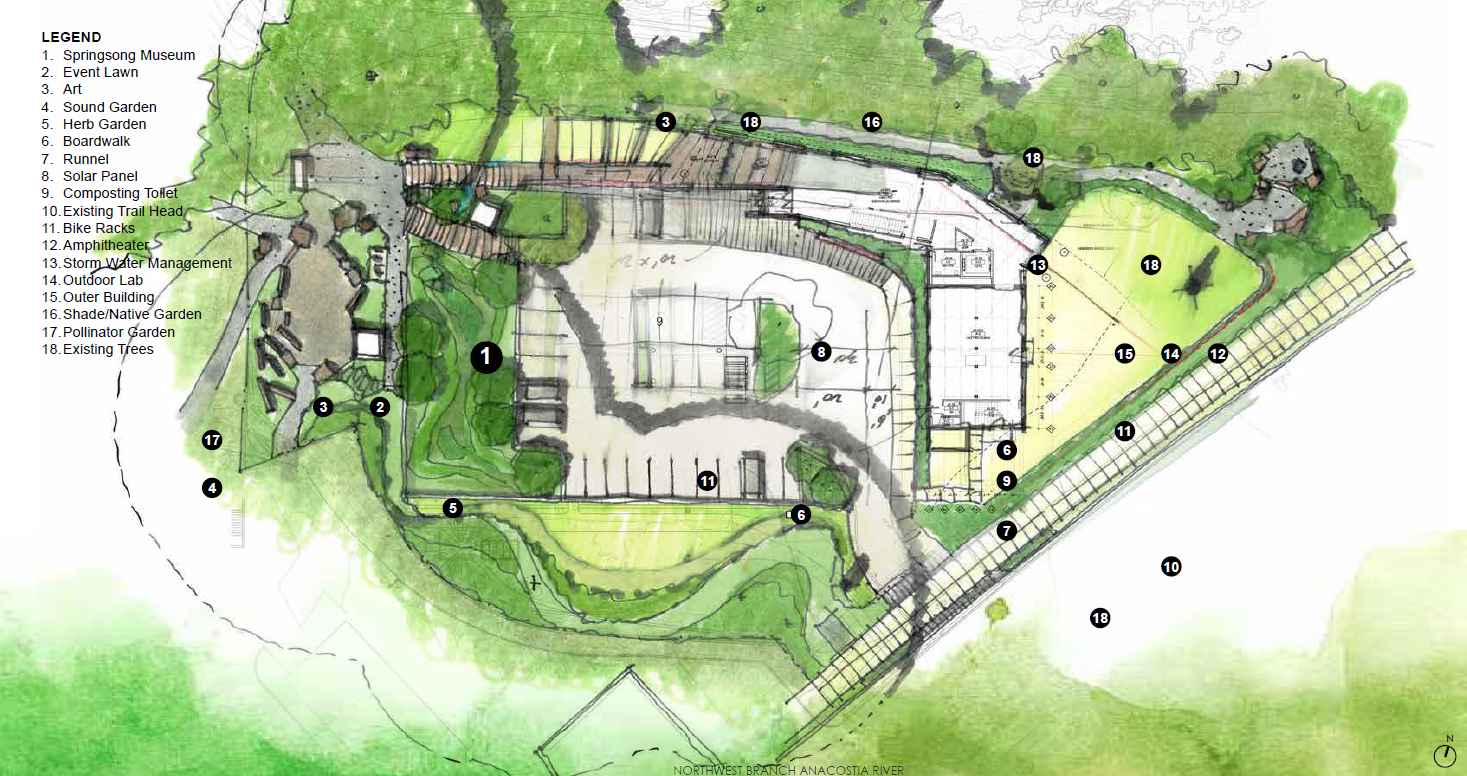
SIGHT | Sight is a key element of the landscape, creating a dynamic visual experience through a rich palette of native plantings, natural materials, and nature-themed art. Seasonal changes in the plantings—from vibrant spring wildflowers to autumn foliage—will captivate visitors.
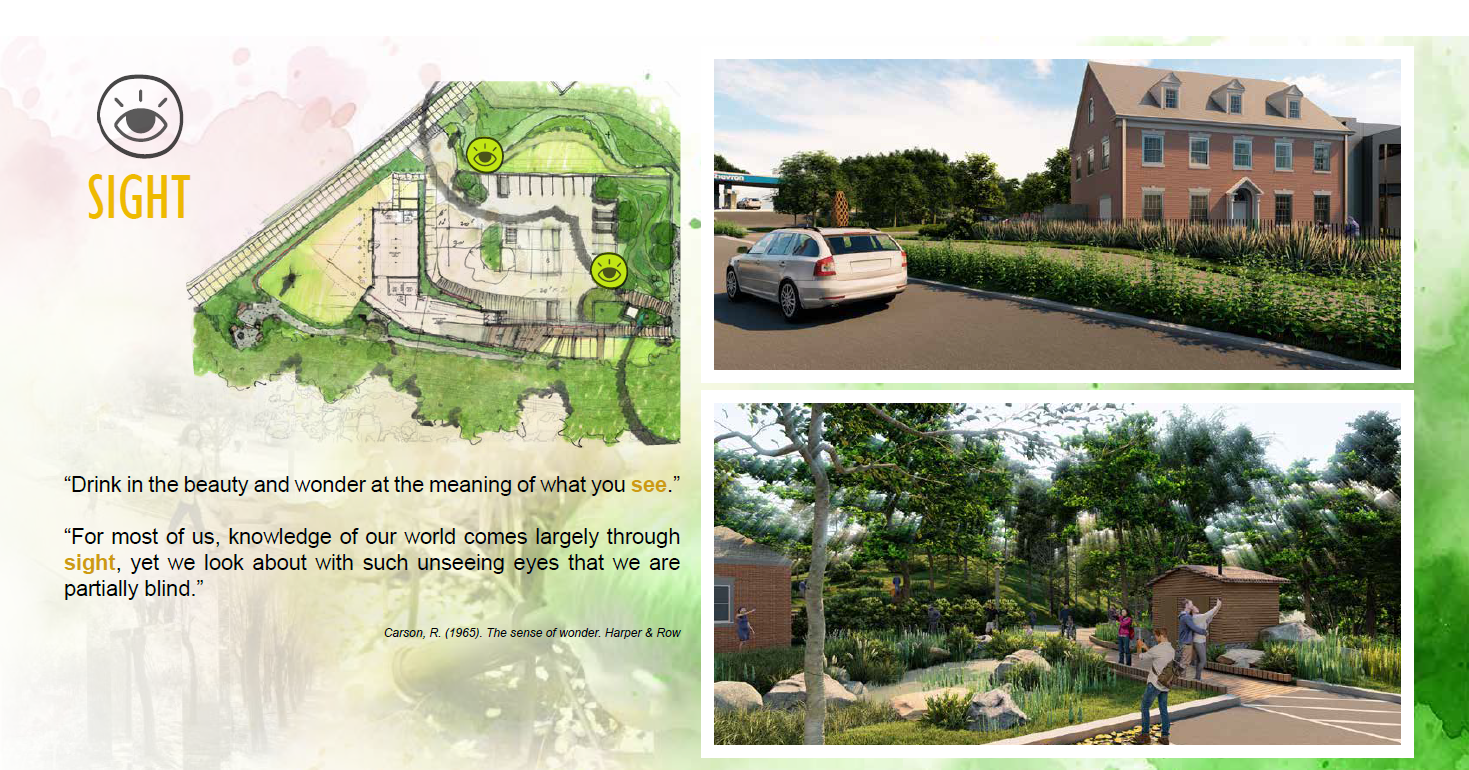
SMELL | Smell will be engaged through the fragrances of native plants such as mountain mint, common milkweed, rosemallow, and Eastern white pine. As visitors explore the landscape, the fresh, earthy scent of the soil and the sweet aromas of wildflowers will create a sensory experience that connects them to the land.
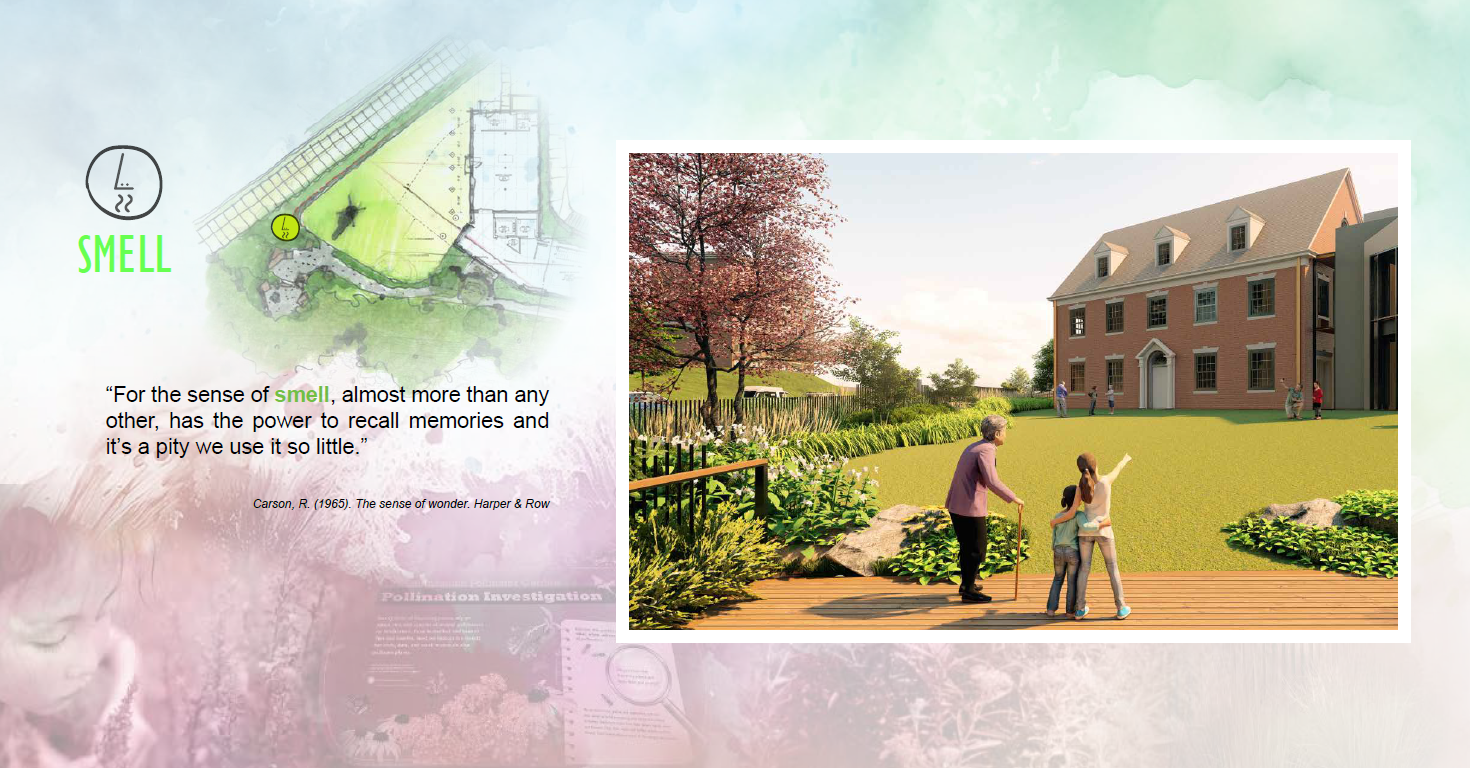
SOUND | Sound will transform the space into a symphony of nature’s voices. The soft murmur of wind through the trees, the rustling of leaves, and the rhythmic dance of birdsong will create a harmonious soundtrack, buffering the site from Route 29 and filling the air with energy and calm.
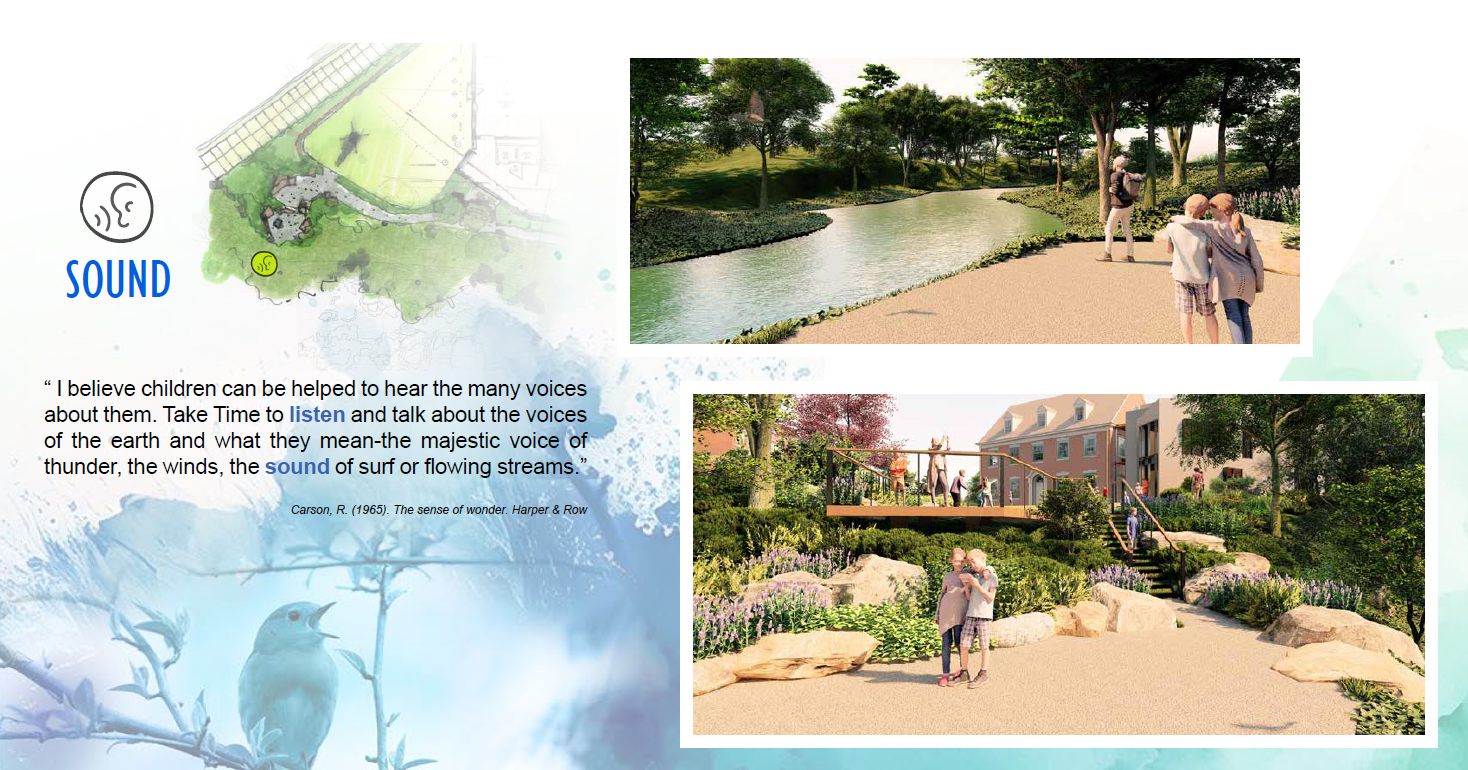
TASTE | Taste will subtly integrate raised community gardens with edible plants like berry bushes and herbs, offering visitors a chance to sample nature’s bounty. This will highlight the relationship between humans and the land, encouraging visitors to appreciate our shared natural resources and the importance of preserving them through sustainable practices.
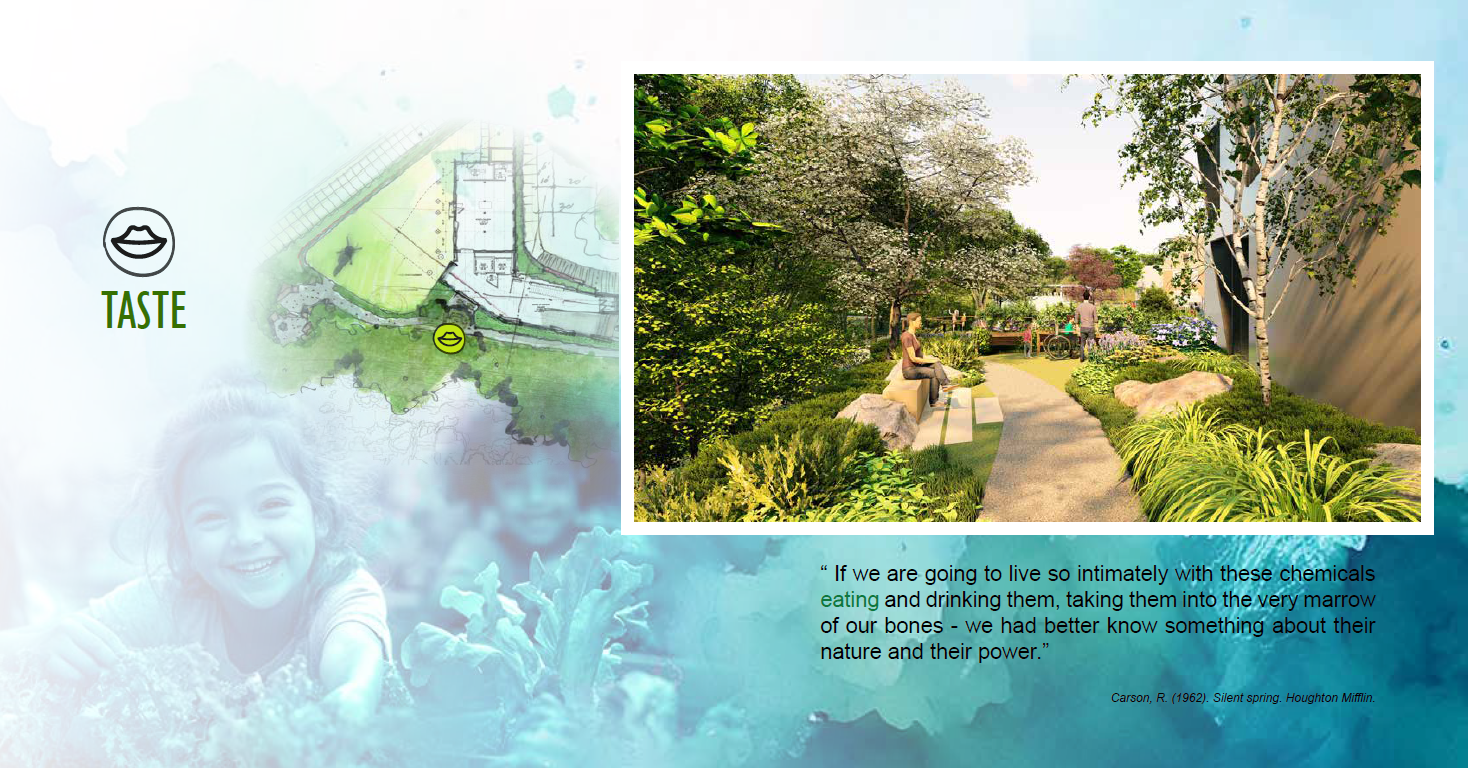
TOUCH | Touch will be woven into the experience through the textures found throughout the landscape. Visitors will encounter the rough bark of native trees, the soft leaves of flowering plants, the mulch surface at the outdoor lab, and the smooth surfaces of stones along the runnel.
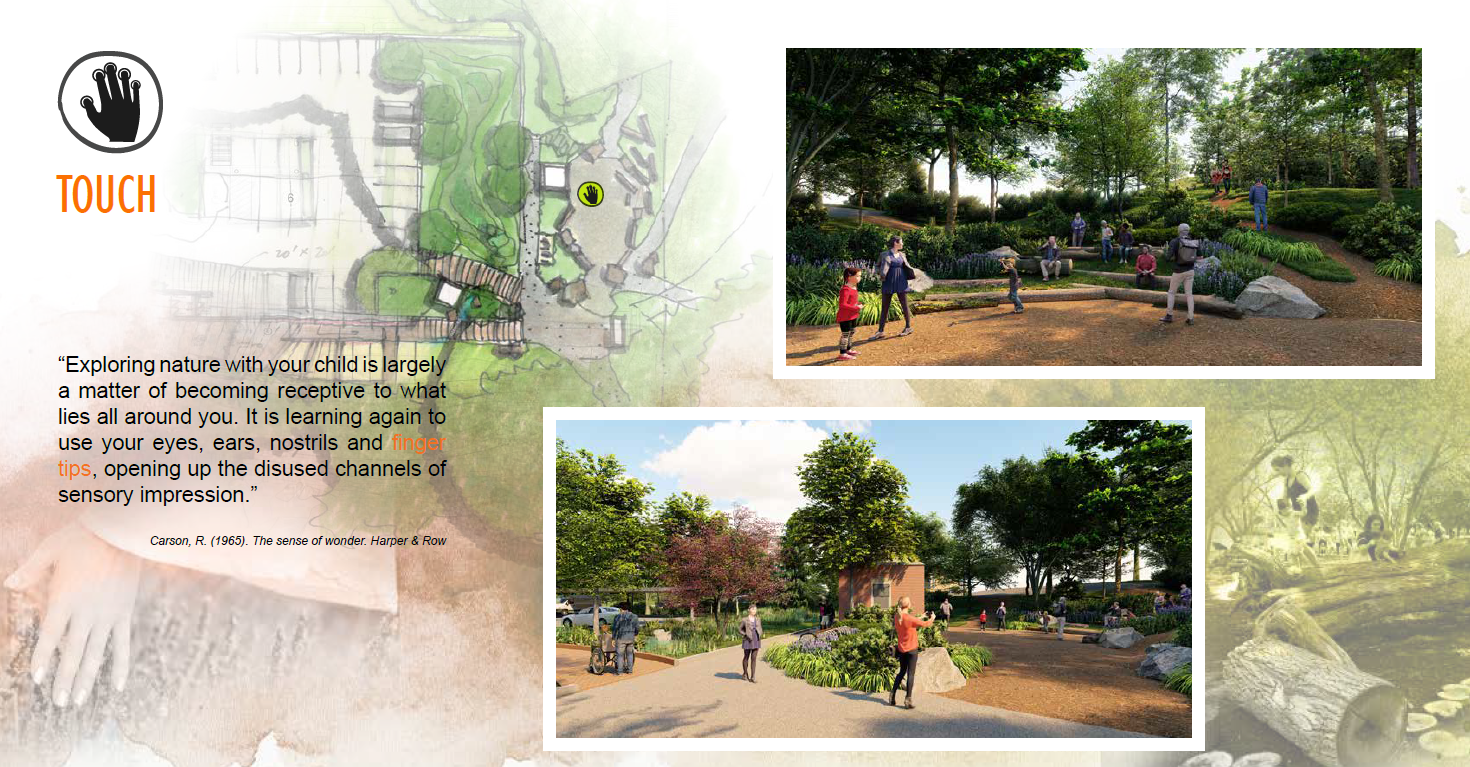
THE LAND | The plantings will not only provide aesthetic beauty but also support local wildlife, emphasizing Carson’s understanding of the delicate balance that sustains ecosystems. These native species, in their variety and resilience, will encourage visitors to marvel at the abundance of life, fostering a deep sense of wonder about nature’s complexity.
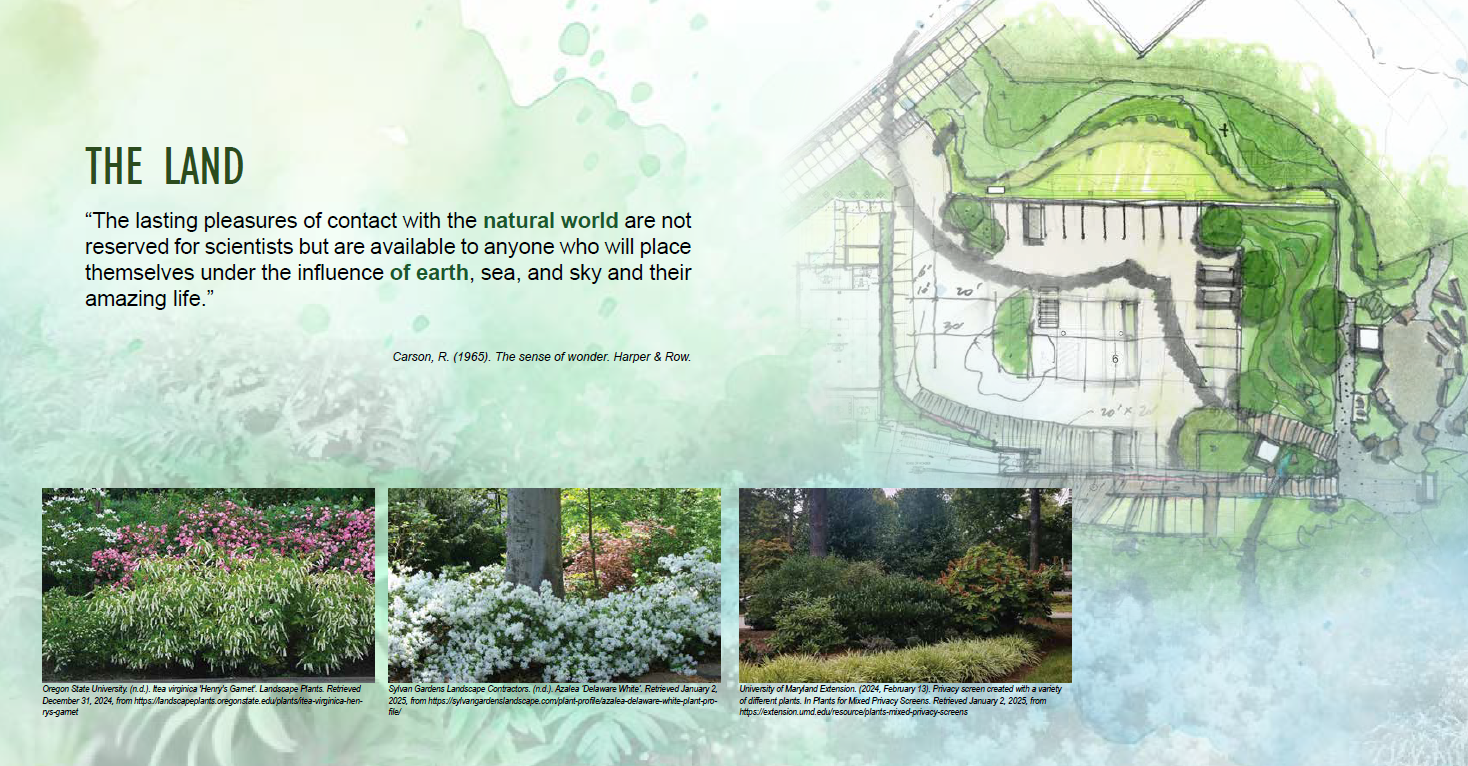
THE WATER |The water moving through a rain chain and runnel—visible connections from the museum’s roof to the stormwater pond—will add depth, especially when raining. The gentle sound of water will remind us of life’s continuous flow, our deep connection to the earth, and the balance of ecosystems.
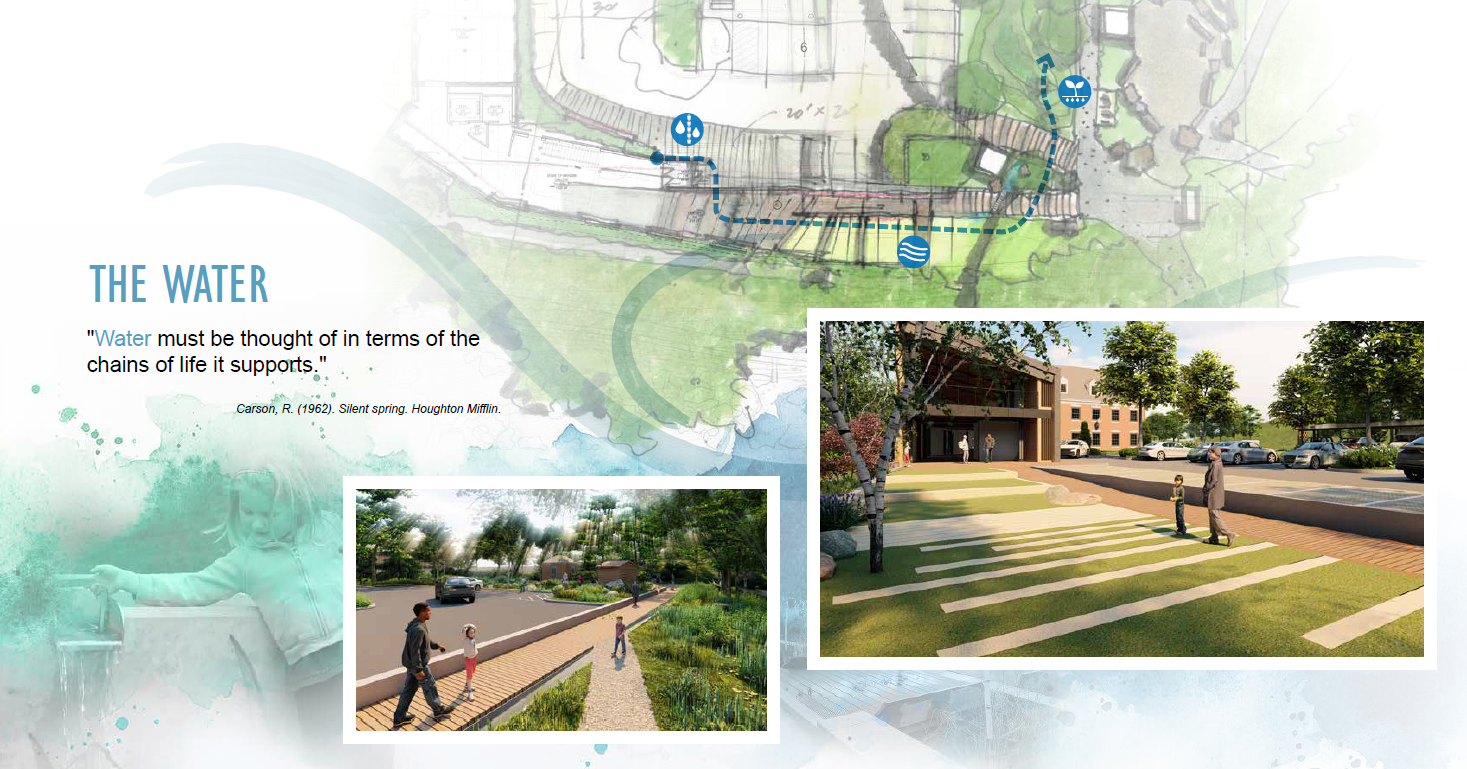
FROM FILTRATION TO RESTORATION & EXPLORATION | Once a water filtration plant, the site is reimagined as a place that purifies the mind and spirit—inviting reflection, curiosity, and renewal. Through an approach rooted in environmental and historical sensitivity, sustainability, and education, the design honors Carson’s legacy while inspiring a collective responsibility to protect our planet.
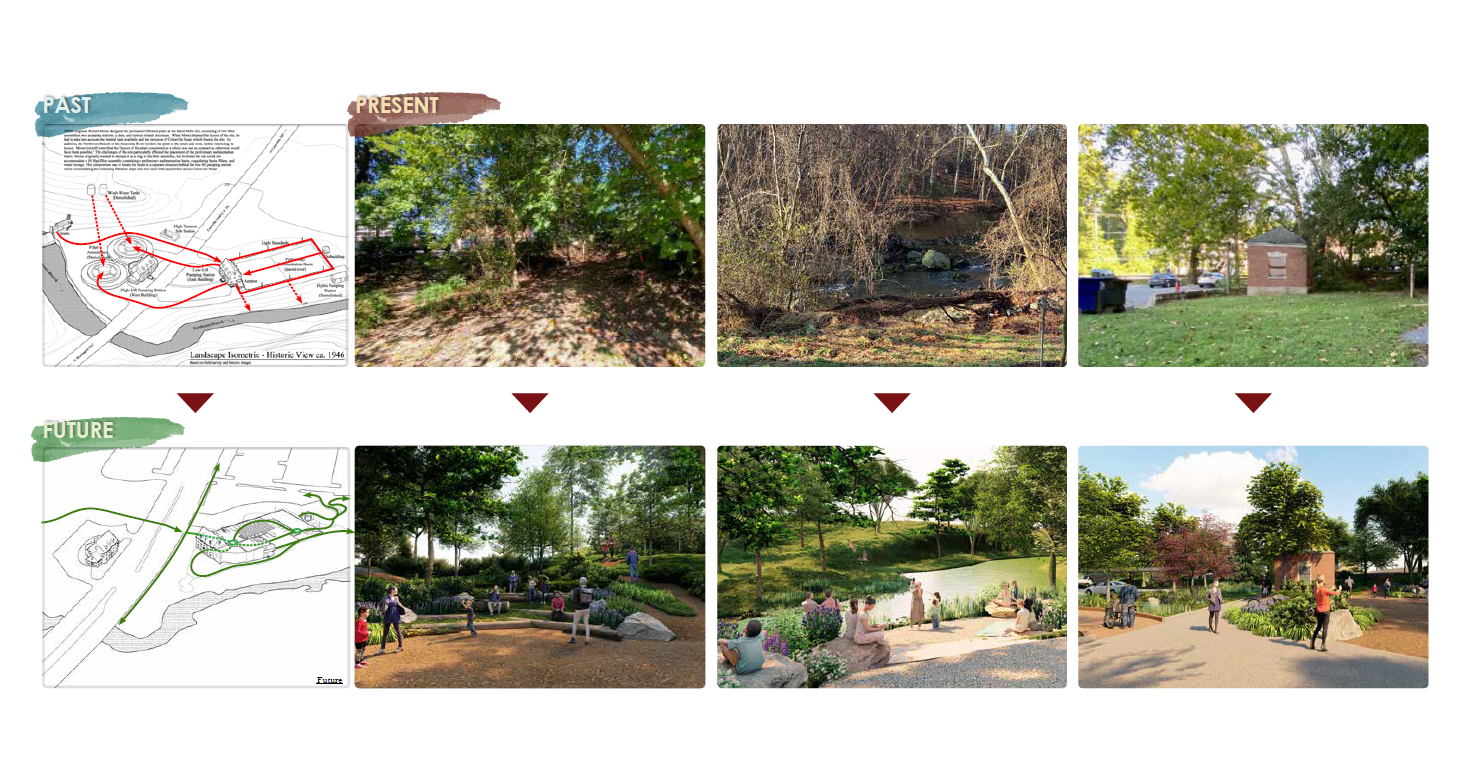
A SENSE OF WONDER | The Springsong Museum landscape design serves as a living tribute to Carson’s vision. By engaging sight, sound, smell, touch, and taste, the landscape transforms into an immersive space for exploration—reinforcing the delicate balance of nature and our role in its safeguarding.
We only have one planet—let’s cherish it!
